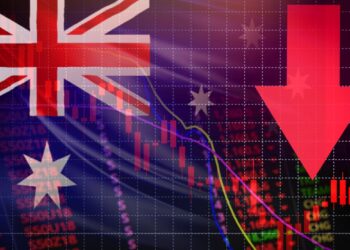T. Rowe Price has reduced its exposure to risk assets, reflecting a cautious stance on global growth and inflation challenges in its Global Asset Allocation: The View from Australia report for May 2025.
Thomas Poullaouec, head of multi-asset solutions APAC at T. Rowe Price, and his team released their latest global asset allocation insights, highlighting a defensive shift in investment strategy.
To align with the firm’s view on moderating risk, T. Rowe Price has lowered its equity allocation to an underweight from neutral while adding to cash (shifting to neutral) due to potential headwinds to growth from tariff and trade policies.
The proceeds from de-risking in equities were added to cash and alternatives with the aim to be “more defensive in an increased volatile environment”, the report stated.
Within equities, T. Rowe Price stated it continues to value-oriented sectors, supported by reasonable valuations and a shift away from US large-cap growth.
Regionally, opportunities outside the US are seen as more attractive due to compelling valuations and supportive fiscal and monetary conditions.
T. Rowe’s positioning on bonds was unchanged, with the global investment giant maintaining an overweight position to Australian bonds due to the heightened risk environment, the Reserve Bank of Australia’s (RBA) recent easing bias, and the carry versus other developed market.
Simultaneously, the firm holds an underweight position in US bonds, anticipating upward pressure on interest rates due to increasing fiscal supply.
Other portfolio adjustments include reducing exposure to spread sectors such as high yield and emerging market bonds, where spreads are vulnerable to trade-related disruptions.
Poullaouec and his team stated they “remain cautious on risk assets as [the] trajectory of global growth and inflation face potential challenges from disruptive trade policies”.
Further, the team pointed to softening US growth expectations, driven by negative sentiment related to tariffs. However, they noted that policy support from Europe and China could help counterbalance these risks.
In Australia, economic resilience is being bolstered by post-election fiscal support, monetary easing and sustained demand from China.
“Disruptive trade policies could force central banks to make uneasy choices whether to support growth despite threats of higher inflation, which is most pronounced in the US,” they added.
Among key risks cited were escalating trade wars, potential missteps by central banks and rising geopolitical tensions.
Earlier this month, T. Rowe Price announced a reduction in its exposure to US equities and mega-cap tech stocks due to changing market dynamics and uncertainties.
At the time, the investment firm said despite the recent pause in tariffs acting as a glimmer of hope for global markets, “the future remains uncertain as companies are withdrawing guidance due to an unclear outlook”.
In early April, BlackRock reduced its US equity exposure to neutral, only to reverse course and shift back to an overweight position just a week later.
Namely, following Donald Trump’s announcement that a majority of the heavy-handed “Liberation Day” tariffs would be paused, BlackRock announced it was renewing its overweight call on US equities.
The vote of confidence came after the S&P 500 rebounded nearly 6 per cent. And despite it still, at the time, sitting at some 13 per cent below its February high, BlackRock said it was confident US equities could “regain their global leadership”.







